Vacuum Breakers
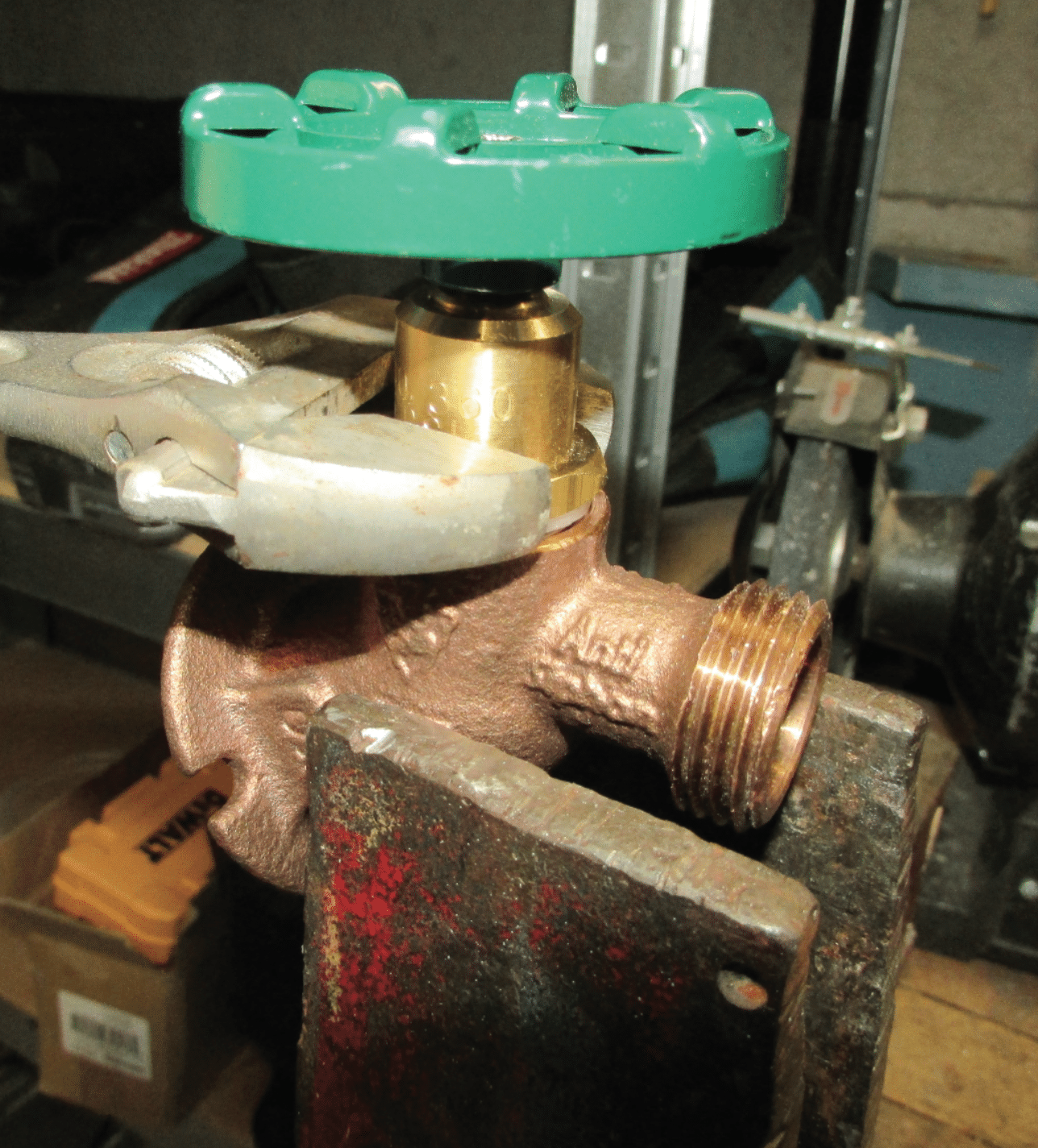
Home inspectors need to be aware of a relatively new non-frost-free outdoor faucet with an integral vacuum breaker called the Arrow-Breaker faucet, made by Champion-Arrowhead, Los Angeles, CA (http://champion-arrowhead.com/). Note: Other commonly used terms for an outdoor faucet include lawn faucet, sillcock and hose bib.
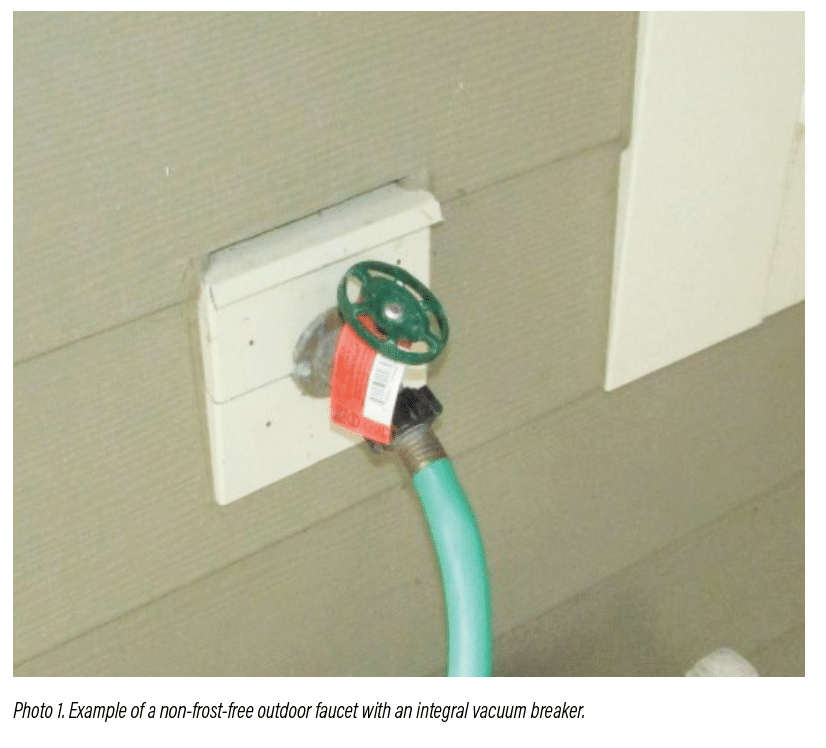
Because it has an integral vacuum breaker, the Arrow-Breaker faucet has taken over the non-frost-free faucet market, at least for new construction, where I live in Minnesota. The most obvious identifying characteristic is the orange tag that comes attached to the faucet stem (Photo 1).
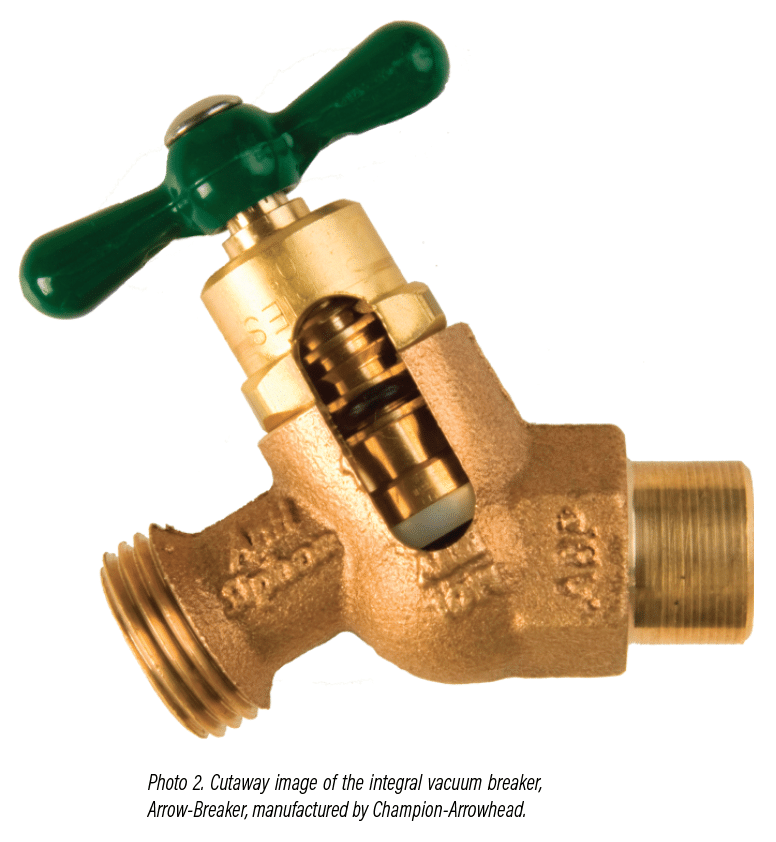
In addition to the orange tag, it has the words “anti-siphon” cast into the product. Again, the unique feature is a built-in vacuum breaker, on both the frost-free and non-frost free versions of the product (Photo 2). By contrast, a standard faucet without a built-in vacuum breaker doesn’t have the thick neck (Photos 3).
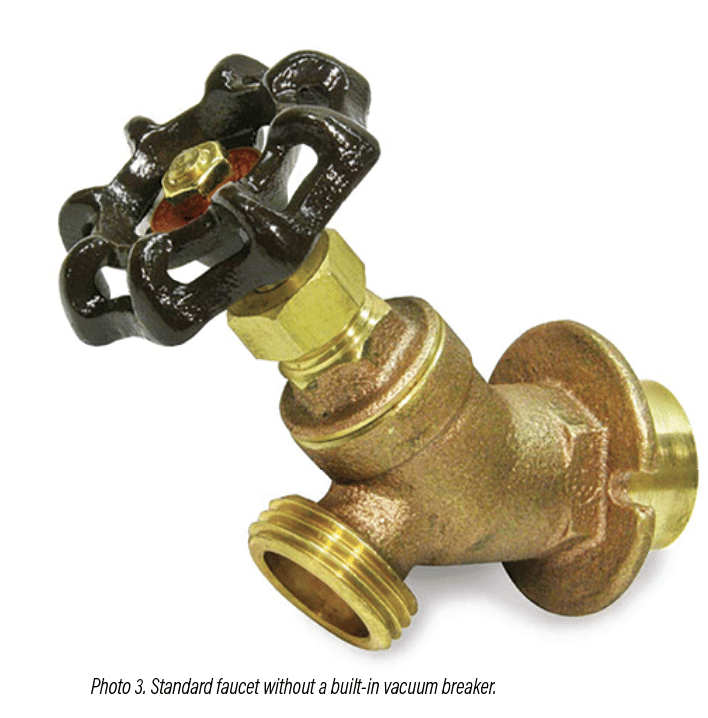
It is important to note that the Arrow-Breaker faucet is not the only non-frost-proof faucet with an internal vacuum breaker; however, it is the only one that seems to have made its way to Minnesota. I learned that Woodford Manufacturing also makes a product that looks identical to every other frost-free faucet that I’ve ever seen, complete with the distinctive mushroom cap at the top (Photo 4). By the way, I learned about the Woodford product after I submitted this article to the ASHI Reporter (Thank you, Technical Review Committee!). You can search the internet for “Woodford 101” to learn more information about this product.
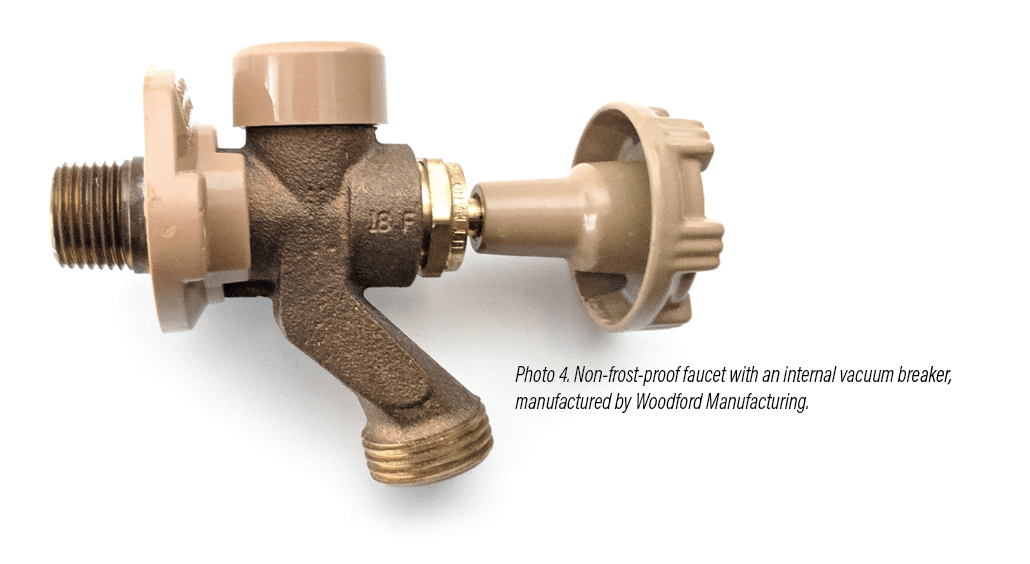
The most important thing to know about these faucets is that there is no need for an external vacuum breaker, a device designed to help prevent cross-connections.
For more information on vacuum breakers and cross-connections, refer to Kenny Hart’s article, “More Straight Talk About Cross-Connections,” published in the August 2006 issue of the ASHI Reporter (http://www.ashireporter.org/HomeInspection/Articles/More-Straight-Talk-About-Cross-Connections/932).
Another important thing to know about these faucets is that it might be difficult to winterize them. (Note to inspectors who live in southern climates: You can stop reading this article now unless you are interested in what your home inspector colleagues in the northern regions of the country need to know.)
As you probably already know, there are two possible ways to winterize an exterior faucet:
1. If the interior drain valve for the faucet is located higher than the faucet, the faucet is opened and then the drain valve is opened to allow air into the pipe. Air replaces water in the pipe and water drains out of the faucet
No problem there.
2. If the interior drain valve is located lower than the faucet, however, the faucet needs to be winterized by having water drain out of the interior drain valve. Air must enter the exterior faucet to replace the water in the pipe.
With an Arrow-Breaker faucet, this can’t happen. The integral vacuum breaker prevents air from getting into the faucet. I’ve emailed the manufacturer about this and they were somewhat baffled. They said that the only way to get water to drain out of the pipe with these faucets would be to use a wrench on the flats of the bonnet to take it apart, thus allowing air into the pipe (Photo 5).
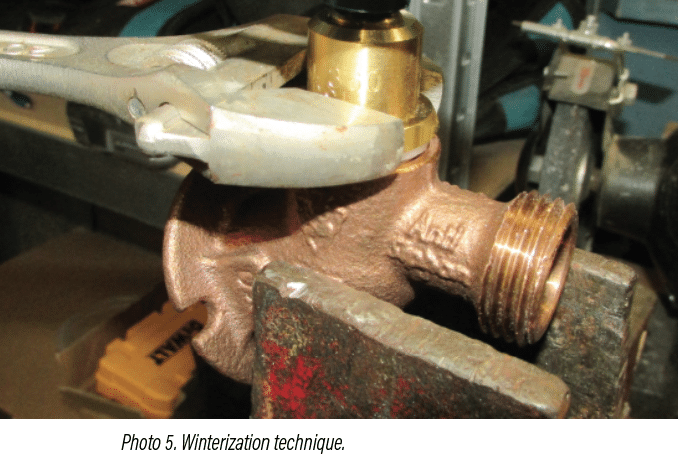
Of course, that got me thinking about external vacuum breakers and the same applies to those; In their normal state, they also won’t allow air into the pipe to replace water. They need to either be removed in the fall or manipulated to allow air in to replace the water. The good news is that on most new installs, the Arrow-Breaker faucet will be installed below the interior shutoff valve so there won’t be any problems.
Arrow-Breaker faucets can be purchased through licensed professional plumbers, wholesale plumbing supply distributors, retail hardware dealers and internet sources for plumbing products.
Other resources: How to prevent your outside faucets from freezing, by Reuben Saltzman (http://structuretech1.com/how-to-prevent-outside-faucets-from-freezing-2/).
Tip for Home Inspectors
Consider using this language in your home inspection report:
“Winterize any exterior faucets every fall to help prevent freeze damage.”
To Read the Full Article
ASHI offers its members unparalleled resources to advance their careers. ASHI offers training for inspectors at all levels of knowledge and experience, including resources about all major home systems. Members benefit from a vast network of experienced professionals, providing a community for mentorship and knowledge sharing..
In this Issue

FIND A HOME
INSPECTOR
Professional Networking
Grow your professional network, find a mentor, network with the best, and best part of the community that’s making home inspection better every day.
